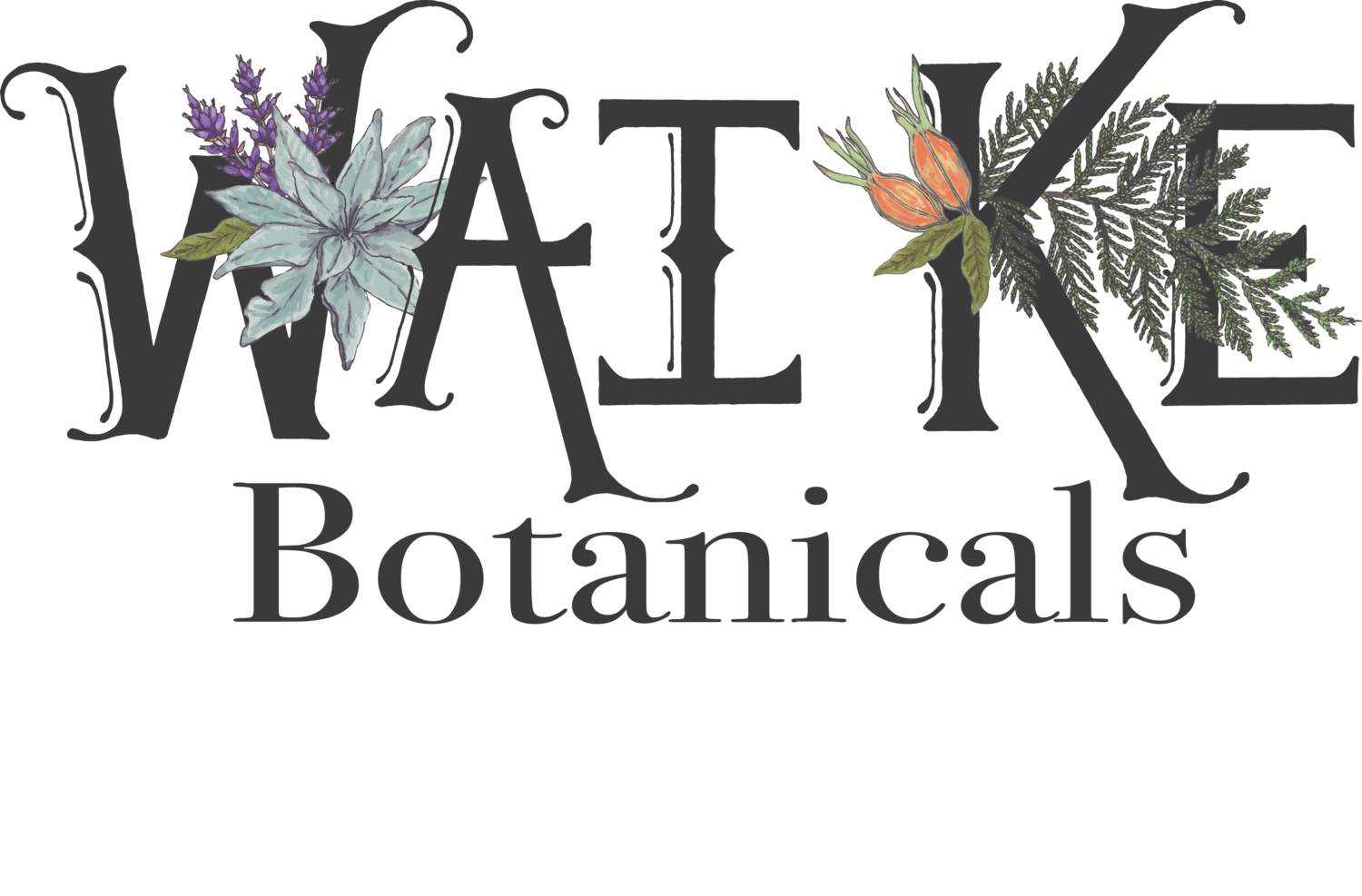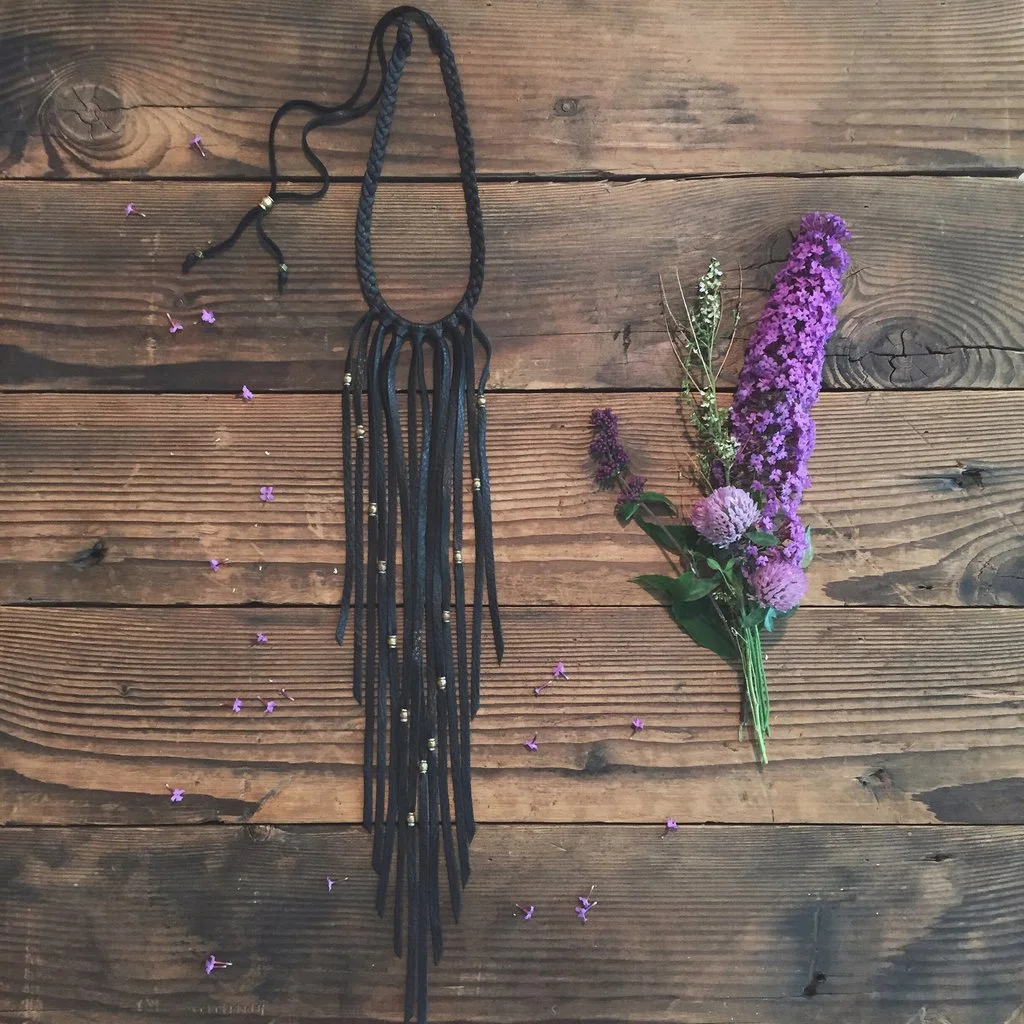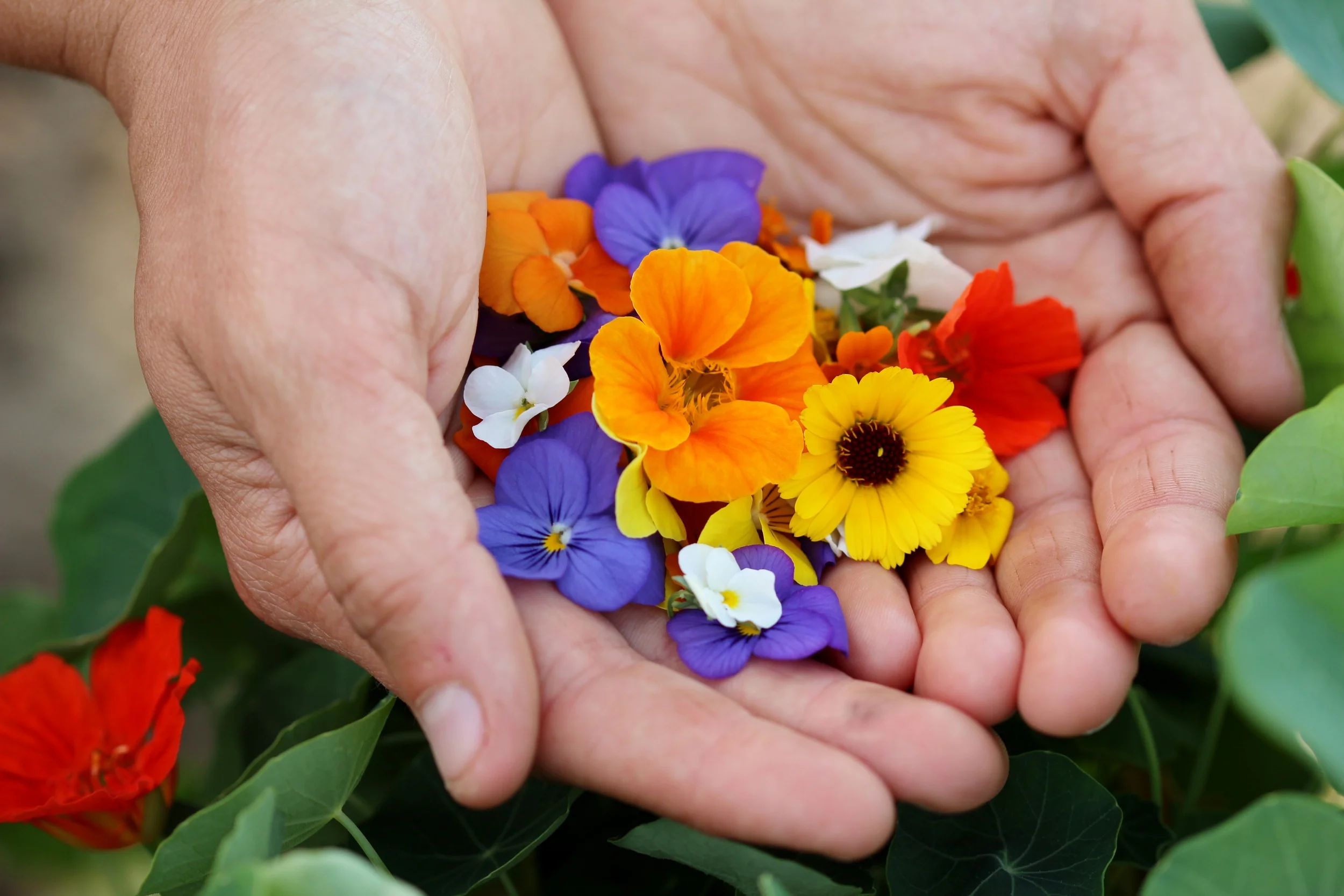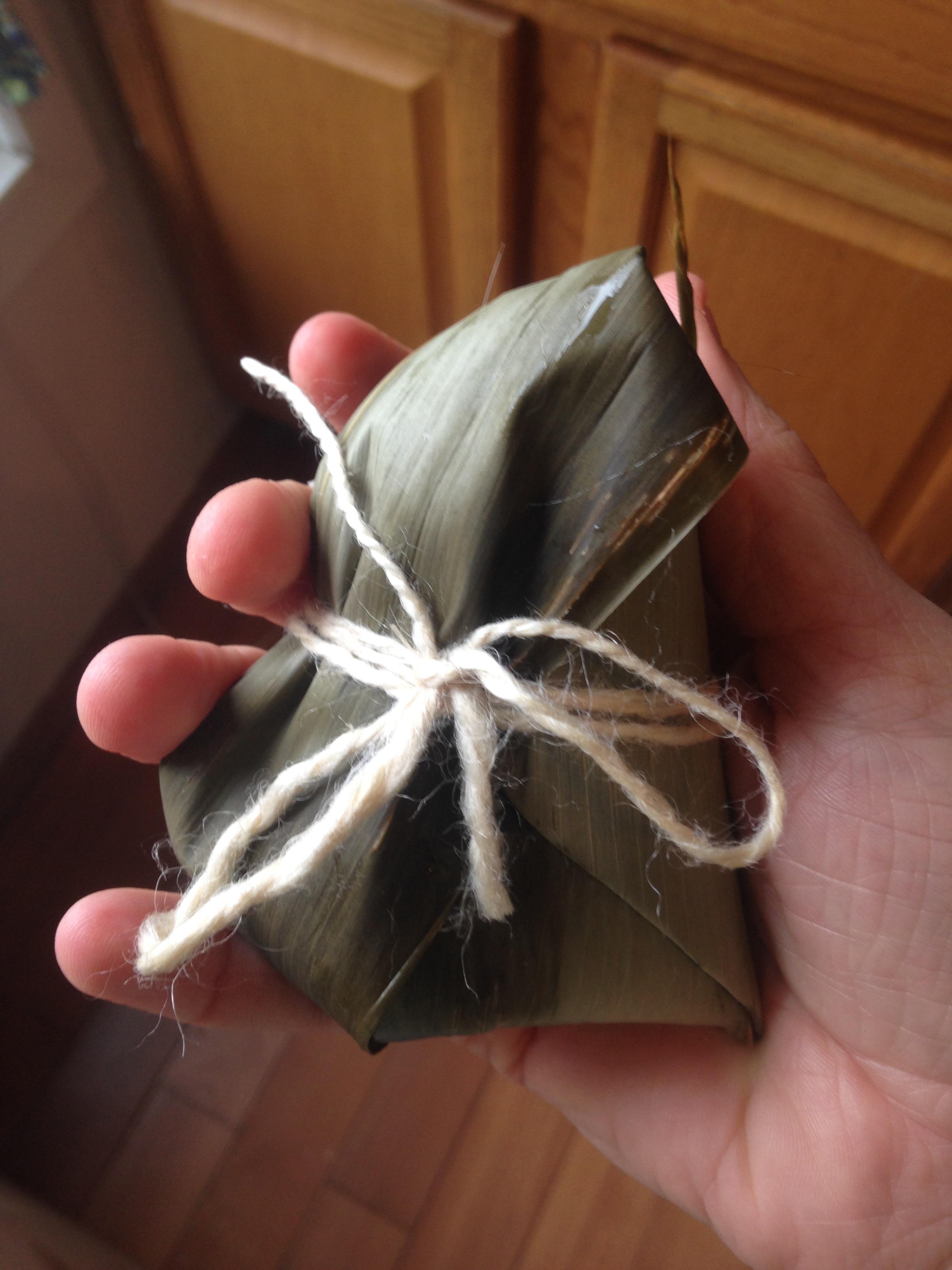DIY : Herb Infused Salves
/I love making salves and all the research and planning that goes into their preparation!! There are so many different ways to combine herbs and blend salves, below is just a reflection of my favorite method and one that is used in the construction of all of our WKB products.
In thinking about what I’m making the salve for (dry hands, cracked skin, joint pain, inflammation, bug bites) I usually make a list of herbs that will help with the different aspects. What herbs would help augment the functions, what essential oils? Let’s take sore muscles for example. Herbs I would think of are arnica, ginger, cayenne, lavender, rosemary, calendula, chamomile. Essential oils that are supportive to the muscles include wintergreen, cinnamon, peppermint, ginger, eucalyptus, lavender, and rosemary.
There are a couple different ways that herbs can help alleviate pain. They can be external tonics, analgesics, anti-inflammatory or counter-irritants. Lavender, for example, is considered an external tonic because it helps draw blood to the surface. By bringing nourishment to an area that’s painful, this category of herbs helps alleviate pain. When we think about anti-inflammatories two herbs probably come to your mind: turmeric and ginger! And, finally, the more aromatic components of essential oils are considered to be counter-irritants. This means that they provide a different form of irritation to an area that stimulates an immune response and cause any lactic acid that has built up to be removed by the influx of fluids and blood to the area.
Herbal salves for musculoskeletal pain offer temporary relief at the surface level. To get a longer lasting result you can try using a heating pad either by itself or with the salve when you apply it. This helps the oils penetrate deeper into the tissues and affect change at a deeper level. If you use a heating pad or hot water bottle, make sure the heat isn’t too intense and place a towel or piece of gauze between the heat source and the salve (to help keep the salve on YOU!). Epsom salt baths are also amazing at helping our muscles relax – our DEPTHS formulation is one of our favorites for tired, sore muscles after a long day. Salt baths can be augmented with herbs as well (we’ll have a post coming soon about herbal baths!!) for an even more healing experience.
Below is a recipe for one of the first salves I made that was a huge hit with friends and family, using some of the herbs above. The Gingery Muscle Salve is an adaptation of the salve found on the Herbal Academy's website.
(The general principles introduced in this recipe for infusing oils, blending EO's into the salve and figuring out the right proportion of beeswax holds the same for any salve you make. Just be sure to research the herbs you're using and to have fun!!)
Gingery Muscle Salve
10 oz arnica infused oil
1 TBS cayenne powder
1 TBS dried ginger powder
1 TBS dried turmeric powder
1 TBS comfrey leaf
1 TBS lavender flowers
Beeswax
1. Find a clean glass jar that can hold 12-14 oz of fluids. Add your dried herbs and arnica infused oil to the jar. If you prefer to make your own arnica oil simply add arnica flowers to the mix and use 10 oz of sesame, coconut, olive or safflower oil as the infusing oil.
2. Cap the jar and let it sit in a warmish location. There are a bunch of different methods you can use here – solar infusion, in which case you leave the jar in the sun and let the warmth of the oils help draw out the constituents of the herbs. I prefer to leave the jars in a darker area and just wait a little bit longer. Dowhat you prefer! Either way, leave the jar sit for 2-3 weeks and shake every day.
3. After 2-3 weeks, strain the herbs from the oil. I like to use a small sieve and cheesecloth. I use the sieve first, then squeeze the herbs in the cheesecloth to extract as much of that precious infused oil as I can.
4. Place the oil in a heatproof glass dish. Place the dish in a pot of water on the stove top and turn the heat up to Medium-High. Be careful as you go further not to get any water in the oil! (you’re essentially creating a make-shift double boiler).
5. For every ounce of oil you have, use 2.75g of beeswax. If you want a softer salve, use less. If you want a harder salve, use more. You can adjust the amount of wax you use by putting a cold spoon in the oil + melted wax mixture then placing it in the fridge for a couple minutes. That will give you a bit of a feel for the consistency you’ll end up with.
6. When all the wax has melted, remove the glass jar from the pot of water and allow the oil to cool to about 130 degrees. If you don’t have a thermometer, just wait until the surface of the oil around the glass begins to ever so slightly form solid.
7. If you want to use essential oils, now is the time to add them. I generally use 6-12 drops per fluid ounce of oil6 drops: 1 oz creates a 1% mixture, while 12 drops:1 oz creates a 2% mixture. Add your oils and stir to incorporate them evenly.
8. Pour the salve into jars. You can use small jars, big jars, salve tins….up to you! Allow the salve to cool and harden COMPLETELY before putting the lids on OR moving it.
9. Label your salve and share with friends!
Have fun creating this for yourself! It’s one of my friends’ favorites and makes a great gift!!
References:
Anthis, Christina. (2014). Warming Ginger and Cayenne Salve for Natural Pain Relief. www.theherbalacademy.com.
Cobb, Lindsay. (1982). Homemade Herbal Remedies for Sore Muscles. Mother Earth News, November/December issue. http://www.motherearthnews.com/natural-health/herbal-remedies-for-sore-muscles-zmaz82ndzgoe.aspx?PageId=2
Dugliss-Wesselman, Stacey. (2013). The Home Apothecary. Quarry Books, Beverely, MA.
Green, James. (2000). The Herbal Medicine Makers Handbook. Crossing Press, Berkeley, CA.
Worwood, Valerie Anne. (1991). The Complete Book of Essential Oils and Aromatherapy. New World Library, San Rafael, CA.





















